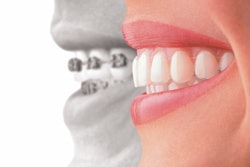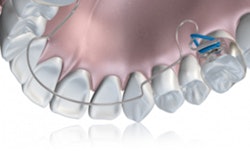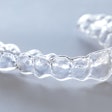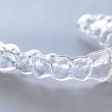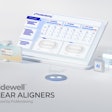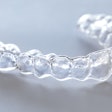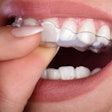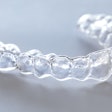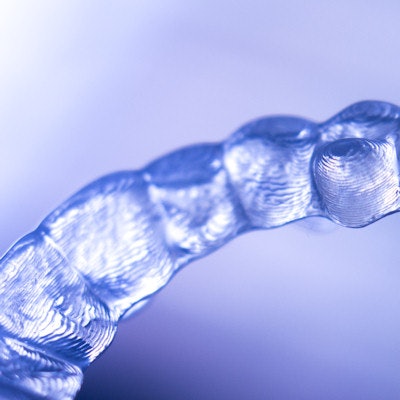
With more general practitioners offering clear-aligner treatments, being up-to-date on the biological mechanisms and pharmaceuticals that might affect tooth movement is crucial. A new comprehensive review describes the issues related to effective orthodontic treatment.
Understanding more about the biology of tooth movement is important for completing treatment in a safe, accelerated, and controlled manner, according to review author Moshabab Asiry, BDS, MSc. Dr. Asiry discussed the effects of various medications and hormones on bone remodeling during orthodontic treatment in his review, published in the Saudi Journal of Biological Sciences (September 2018, Vol. 25:6, pp. 1027-1032).
"Care should be taken when prescribing medications during orthodontic tooth movement because some medications, like NSAIDs [nonsteroidal anti-inflammatory drugs], bisphosphonates, exogenous thyroxin, steroids, etc., can increase or decrease tooth movement," wrote Dr. Asiry, an associate professor of pediatric dentistry and orthodontics at the King Saud University College of Dentistry in Riyadh, Saudi Arabia.
Tooth moves
While there are many innovative mechanical devices for tooth movement, a better understanding of the basic concepts of tooth movement could reduce treatment time and improve patient satisfaction, according to Dr. Asiry.
To further this goal, his review focused on published literature on the biological changes that take place at the molecular level during orthodontic tooth movement and related research and theories.
Dr. Asiry explained the three phases of tooth movement, based on previous research:
- The initial phase: The initial phase occurs immediately after force is applied to a tooth and lasts one to two days. Displacement of the tooth in the periodontal space causes rapid movement within the bony socket and also compression and stretching of the periodontal ligament.
- The lag phase: The initial phase is followed by a lag phase of 20 to 30 days with minimal movement.
- The postlag phase: During the postlag phase, a gradual or sudden increase in tooth movement is usually seen around 40 days after the initial application of force.
Chemical mediators play a role in tooth movement, Dr. Asiry explained. This can include the release of proteins called chemokines during acute inflammatory response and orthodontic movement. Cytokines are extracellular proteins that modulate the activity of other cells, are seen in various stages of inflammation, and some of which mediate bone remodeling during orthodontic tooth movement.
In the realm of neurotransmitters, normally passive neurons that innervate dental and paradental tissue become active during tooth movement, he wrote. This leads to the release of active proteins that cause local inflammation and also neuropeptides that can increase vascular permeability and directly affect bone.
In addition, the effects of medications on signaling molecules, directly or indirectly, influence orthodontic tooth movement, according to Dr. Asiry. Research suggests that drugs that inhibit leukotrienes, such as zafirlukast and montelukast, decrease orthodontic tooth movement, as do those that block an enzyme involved in leukotriene synthesis, such as zileuton.
Many patients take NSAIDs because of initial discomfort with orthodontic tooth movement, but these drugs may decrease the rate of tooth movement due to various factors, including their suppression of prostanoids (prostacyclins, thromboxanes, and prostaglandins).
Acetaminophen is not an NSAID but is similar in chemical structure. Studies suggest that it does not affect orthodontic tooth movement and is safe for managing pain related to treatment, Dr. Asiry explained.
Some researchers believe that corticosteroids may increase orthodontic tooth movement, depending on the dosage and timing, while others think they inhibit it through the stimulation of in vitro bone resorption, he wrote.
Some hormones produced by the body are thought to affect orthodontic tooth movement, he added. Parathyroid hormone is released when there is a low concentration of calcium in the blood, and it stimulates bone resorption and increases the rate of orthodontic tooth movement. Estrogen is decreased after menopause, which can lead to osteoporosis and may decrease the rate of orthodontic tooth movement in postmenopausal patients, according to some studies.
Previous research also suggests that vitamin D3 may increase tooth movement rates. Vitamin D3 regulates serum calcium and phosphate levels, and deficiency of this vitamin can lead to osteoporosis and decreased bone mineralization, Dr. Asiry explained.
Greater understanding needed
Despite previous research, there is room for more theories and better techniques to accelerate tooth movement, Dr. Asiry noted.
"Better understanding of the tooth movement mechanism will inspire the clinicians to design and implement effective appliances that will result in maximum benefits and minimum tissue damage to the patients," he concluded.





